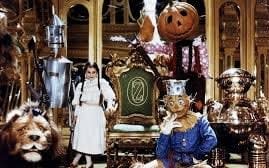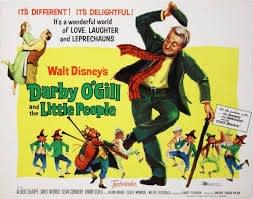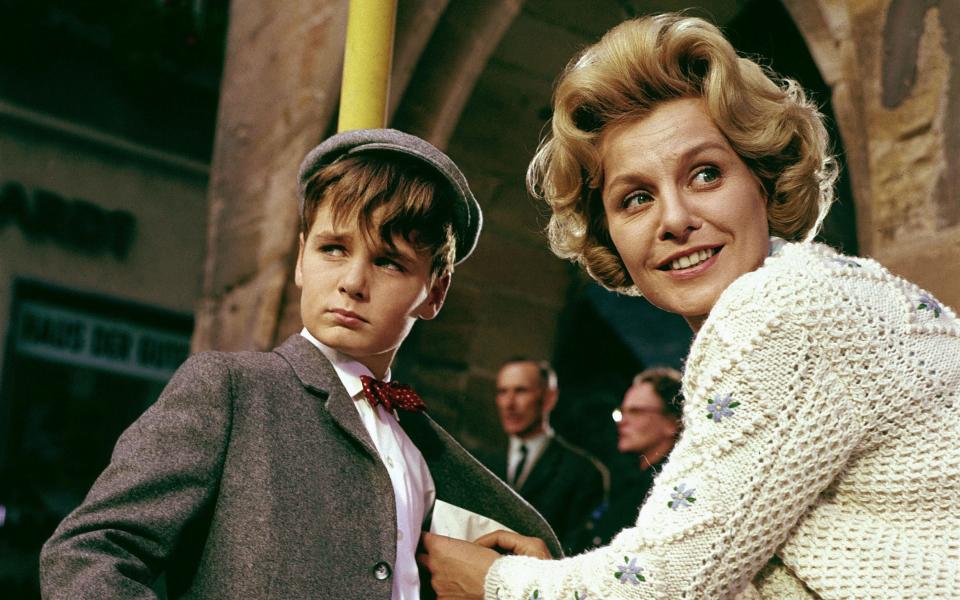From The Love Bug to The Rocketeer: 15 Disney+ hidden gems

You’ve mainlined Marvel, shovelled down Star Wars, laid waste to the live-action remakes. So what to watch next on Disney+? The studio’s new streaming service, which launched in the UK earlier this week, has a library of over 1,000 films and television series stretching back to 1937’s Snow White and the Seven Dwarfs, its first feature-length release.
But sweep aside the animated classics and franchise spectaculars and you’ll find a trove of less familiar titles – staples of the VHS-rental era that have long since faded from cultural prominence, but we feel are ripe for rediscovery. Here’s our curated selection of the platform’s hidden gems, along with a handful of more recent productions that are equally deserving of a second look.
1. The Three Caballeros (Norman Ferguson, 1944)
One of the least-well-known Disney animated features, this offbeat anthology piece was an affectionate overture to Latin America, made against a backdrop of the Roosevelt administration’s ‘Good Neighbour’ foreign policy shifts of the 1930s and 40s. A wildly innovative, at-times hallucinatory live-action/hand-drawn hybrid, it follows Donald Duck as he receives a birthday crash-course in the region’s wildlife and culture, and attempts to woo some of its (human) singing stars, including Mexico’s Dora Luz.
2. The Adventures of Ichabod and Mr Toad
(Jack Kinney, Clyde Geronimi, James Algar, 1949)
What do you do with a plot that can’t quite be stretched to feature length? If you were Disney in the 1940s, you put it into a package film – and this sturdy double bill, featuring half-hour retellings of The Wind in the Willows and The Legend of Sleepy Hollow, was one of half a dozen produced by the studio that decade. Narrated in turn by Basil Rathbone and Bing Crosby, the two segments are a touch unbalanced in terms of quality – the Kenneth Grahame tale gets by far the more artful and energised treatment – but they complement each other nicely, and give a fine sense of the studio’s postwar style.
3. Treasure Island
(Byron Haskin, 1950)
Disney’s first entirely live-action feature was one of the first blockbusters to be made after the coining of that term: a vibrantly shot, splash-the-cash swashbuckler that works hard to do justice to the Robert Louis Stevenson novel. The studio’s 1960 adaptation of Stevenson’s Kidnapped is one of the more conspicuous no-shows in the Disney+ library at present, though it isn’t a patch on this – and there are enough mid-century spectaculars to be getting on with in the meantime, including Richard Fleischer’s 20,000 Leagues Under the Sea, starring Kirk Douglas and a jumbo animatronic squid.
4. Darby O’Gill and the Little People
(Robert Stevenson, 1959)
“May contain outdated cultural depictions”, cautions the 21st century blurb beneath the play button: it’s not kidding, but this Ireland-set fantasy adventure, starring Albert Sharpe and Janet Munro as a father and daughter vying with a local clan of leprechauns is benign and deeply genial stuff. It’s as authentically Irish as Mary Poppins was an honest portrayal of Edwardian London – like that celebrated musical, it was almost entirely shot in California – and features some impressive forced-perspective effects and a young Sean Connery as a hunky Dubliner, making a meal of a riverside ballad.

5. Greyfriars Bobby (Don Chaffey, 1961)
This handsome period piece about the loyal Skye Terrier from 19th century Edinburgh is gentle enough for younger viewers, even though it takes a concert harpist’s approach to the plucking of heartstrings. Adapted from Eleanor Atkinson’s 1912 novel, and starring Donald Crisp and Laurence Naismith, it feels a little like Dickens with stabilisers on, though for a family audience that’s surely a plus – as is the generous smattering of scenes shot on location in Edinburgh itself, which gives the Scottish capital a convincing screen presence.
6. Emil and the Detectives (Peter Tewksbury, 1964)
Stage and screen adaptations of Erich Kästner’s durable Berlin-set children’s book are hardly thin on the ground. As a midcentury Disney project, however, it’s enticingly out of kilter with the studio’s better-known British and Irish fantasias of the day. It’s about kids in the German capital trying to recover a wodge of stolen money from Walter Slezak’s gang of crooks, and end up thwarting a bank heist. The Blytonesque premise (pin-sharp kids, dopey and disbelieving adults) is given an unexpectedly thrillerish edge by its parodic hard-boiled voiceover and extensive use of real – and unexpectedly gritty – postwar West German backdrops.

7. Return to Oz
(Walter Murch, 1985)
Dorothy (Fairuza Balk) begins this astonishing, Walter Murch-directed sequel receiving electroshock therapy in an insane asylum. Then nearly drowns. The Nome King deploys creepy rocks as his spies all over the kingdom; masked, roller-skating goons called Wheelers patrol the now-derelict Emerald City, which is ruled by a headless witch called Mombi; Dorothy's best friend has the noggin of a particularly sinister Hallowe'en pumpkin; Mombi's various heads scream at her from their glass cabinets when she tries to escape. And to think, families in 1985 didn't come skipping back for repeat viewings. Whole childhoods were destroyed here. It's phenomenal. (Tim Robey)
8. The Lone Ranger
(Gore Verbinski, 2013)
Blockbusters don’t come much more adult or morally challenging than Gore Verbinski’s winking revisionist rewrite of Old West lore, which was unfairly hung out to dry on release, with the budget reviewed instead. It's a folly, with risky longueurs in the middle, but for rhythm, comedy and giddy spectacle, the action sequences are sensational, and the engagement with history is almost shockingly thoughtful for a mainstream entertainment. Armie Hammer's John Reid is an amusingly wet, debunked sort of hero, and Johnny Depp gives one of his last inspired performances as Tonto, who keeps feeding seed to the dead bird on his head, and has that Buster Keaton knack of being accidentally in the right place at all times. (TR)
9. That Darn Cat!
(Robert Stevenson, 1965)
Between the 1950s and 1970s, the Derbyshire-born Robert Stevenson was arguably Disney’s trustiest live-action director, turning out 19 films for the studio over two decades. (He’s the only filmmaker to make multiple appearances on this list.) Poppins may have been an indisputable career peak, but this relentlessly sparky comic thriller, in which a bank heist is thwarted by a sly Siamese tom, is a terrific showcase for his signature lightness of touch. It’s also the last and best of the six Disney films Hayley Mills made as a teen star, and also rolled out the overpoweringly wholesome Dean Jones, who’d become a regular presence in the studio’s output over the following decade. The only possible explanation for not enjoying this one is having clicked on the awful 1997 remake by mistake.
10. Blackbeard’s Ghost
(Robert Stevenson, 1968)
It might not rank among Peter Ustinov’s most acclaimed performances, but he’s a hoot in this utterly bizarre fantasy confection, about a college track and field team battling to save an old hotel from ruthless developers. Ustinov plays the blundering spirit of the dread pirate captain, who’s summoned back to this earthly plane by a magic spell gone wrong, and proceeds to wreak drunken havoc while invisible to all but coach Steve Walker (Dean Jones). It’s even sillier than the premise suggests, and impossible to imagine it being made today, which is all the more reason to treasure it.
11. The Love Bug
(Robert Stevenson, 1968)
As gems go, the initial instalment of the Herbie franchise isn’t hidden, exactly – though the series has been up on bricks for the last 15 years. After five middling-to-dire sequels and reboots, though, it’s worth returning to the sentient VW Beetle’s charmingly daft first runaround. It was the last live-action production to be signed off by Walt Disney before his death in 1966, and was picked out by the studio’s founder specifically for Dean Jones, who stars as the downcast racing driver who forms an alliance with Herbie against a dastardly car salesman played by David Tomlinson, with his Mr Banks moustache intact.
12. The Computer Wore Tennis Shoes
(Robert Butler, 1969)
Whether or not there’s any truth in the legend that Walt Disney’s last words, jotted down on a notepad, were “Kurt Russell”, there’s little doubt the actor was one of the studio’s wisest investments in the decade following its founder’s death. This appealingly silly high school comedy was released three years into Russell’s 10-year contract, and stars the then-18-year-old actor as a teen whose brain becomes supercharged after a computer he’s repairing is struck by lighting. Russell is a legitimate delight here, while the movie around him is all the more fun for being intermittently hapless. Along with The Absent Minded Professor and Shaggy Dog films, this one belongs in Disney’s Medfield College series – a cinematic universe avant la lettre. The second of two direct sequels, 1975’s The Strongest Man in the World (same general idea, but with chemically enhanced breakfast cereal), can also be found on the service.

13. Adventures in Babysitting
(Chris Columbus, 1987)
When John Hughes approached Chris Columbus to direct Home Alone, he already knew the then 30-year-old screenwriter had the distinctive Hughesian touch. Exhibit A was Columbus’s directorial debut: a cartoonish Chicago-set caper that plays like a cross between Ferris Bueller’s Day Off and Baby’s Day Out. Elisabeth Shue stars as a teen childminder shepherding her three younger charges through an increasingly perilous night in the big city, featuring a frat party, a contretemps with hoodlums, and a hair-raising ascent up a skyscraper. The city-versus-suburbs dynamic is pure 1980s – though the 2016 remake isn’t bad either.
14. The Rocketeer
(Joe Johnson, 1991)
How can a rose-tinted throwback be years ahead of its time? Answer: when it’s Joe Johnson’s winning homage to the matinee swashbucklers of yore, which set down the winning formula for many of today’s superhero blockbusters almost two decades in advance. The man in the suit is Billy Campbell’s stunt pilot, who tussles with Nazi spies equipped with his smarts and an experimental Howard Hughes-brand jetpack. Bright and earnest but with a knowing twinkle, its frequent thrills come garland in loving period detail: audiences largely ignored it at the time for Kevin Costner’s Robin Hood, but it accrued a team of stalwart defenders whose numbers are presumably about to swell. Johnson, a former special effects artist, would unzip the same bag of tricks two decades later, with considerably more commercial success, while directing Marvel Studios’ first Captain America joint.
15. Homeward Bound: The Incredible Journey
(Duwayne Dunham, 1993)
The Disney+ menus are awash with subpar remakes, but here’s a rare one which (in this critic’s view, at least) outclasses its source material. The premise isn’t too different from 1963’s The Incredible Journey: two domestic dogs and a cat embark on an epic North American wilderness trek. Scrapes involving dangerous wildlife and scenery inevitably ensue – though the crucial decision to give the animals voices, along with the fleshing out of their human owners’ own backstories, makes it as lively and engaging as the original now feels dry and ponderous. Not that you can particularly tell, but the film’s director Duwayne Dunham is an old mucker of David Lynch’s, and edited all 18 episodes of Twin Peaks: The Return.
Disney+ is now available in the UK


